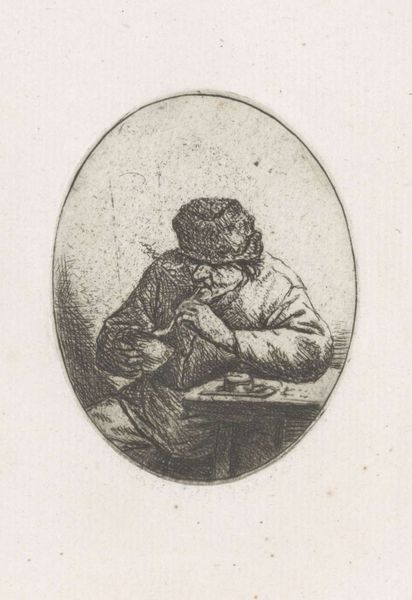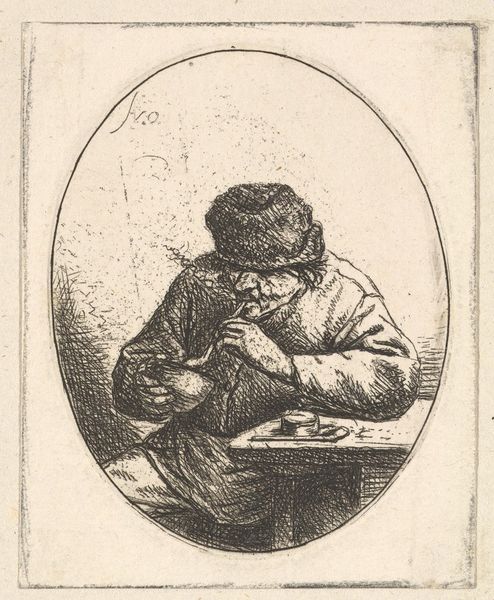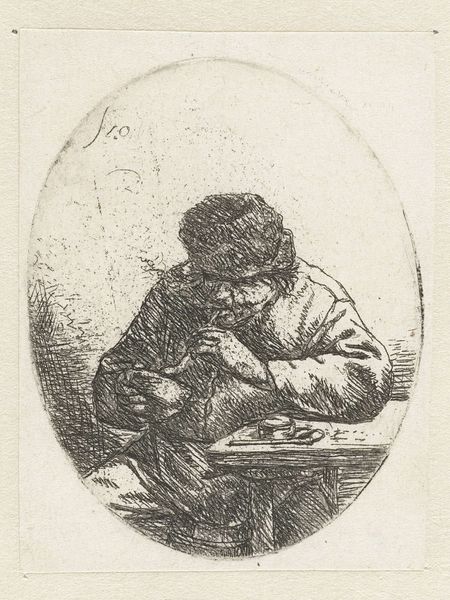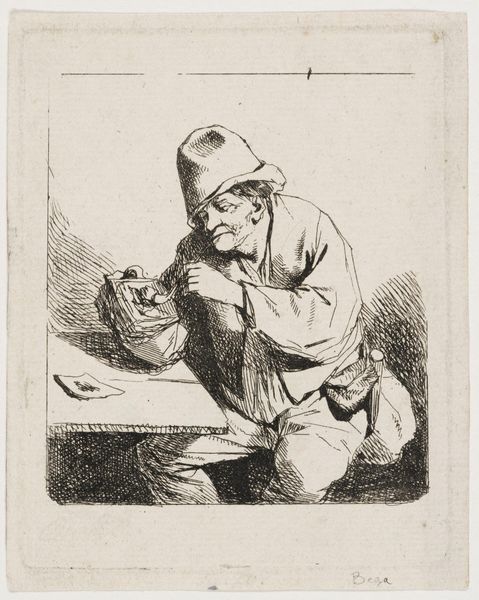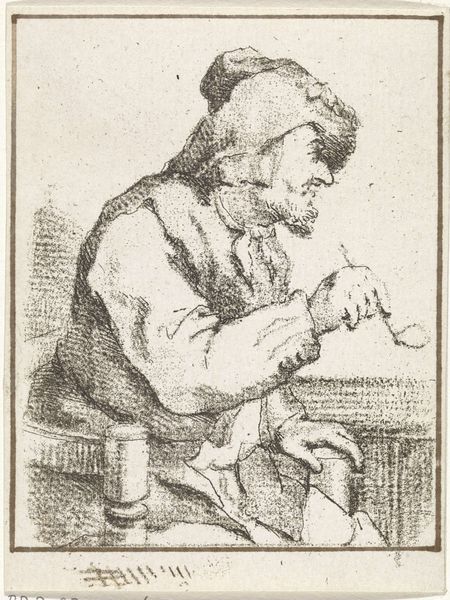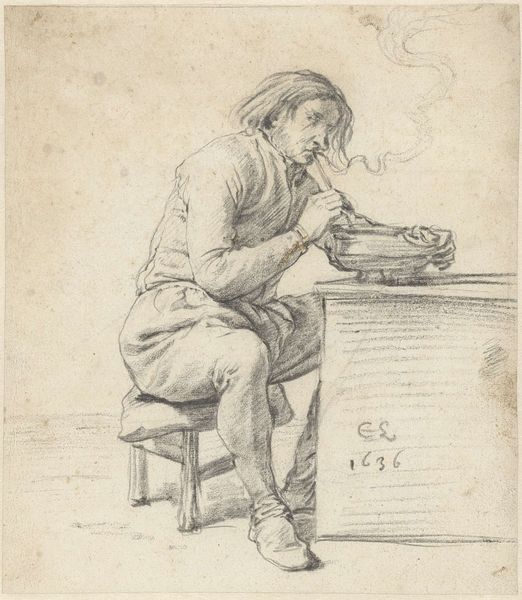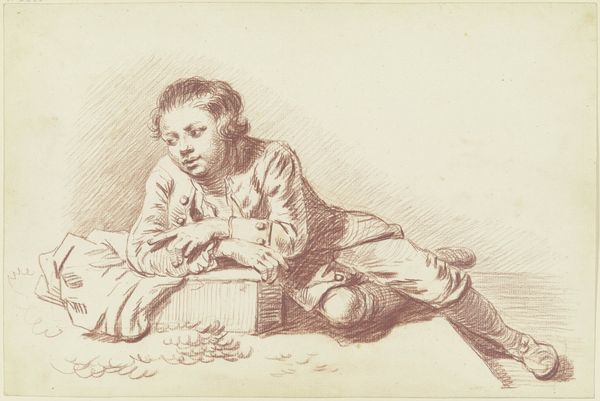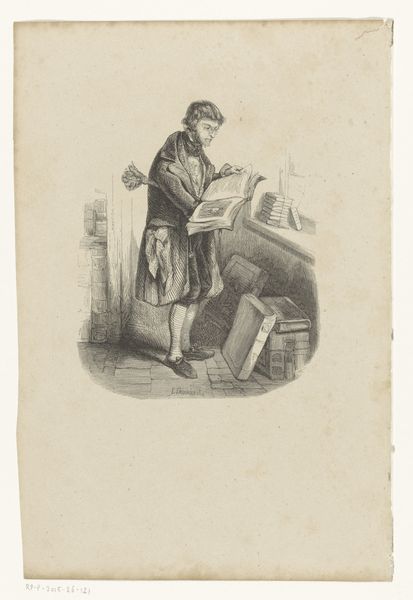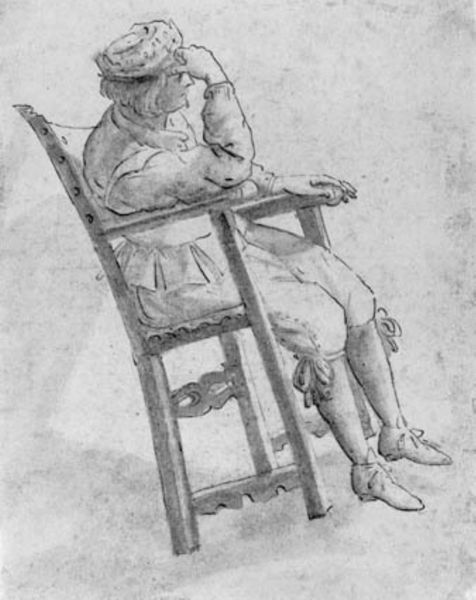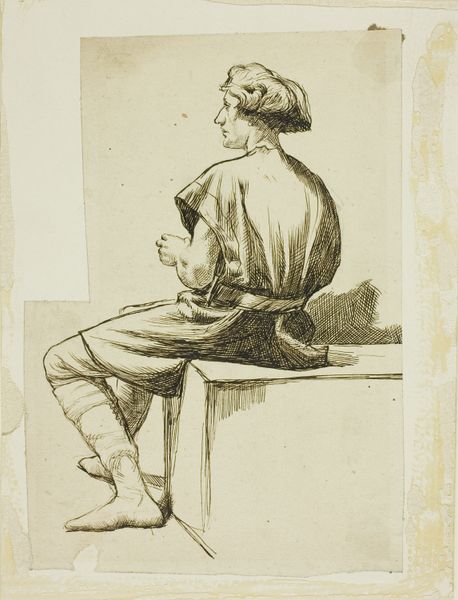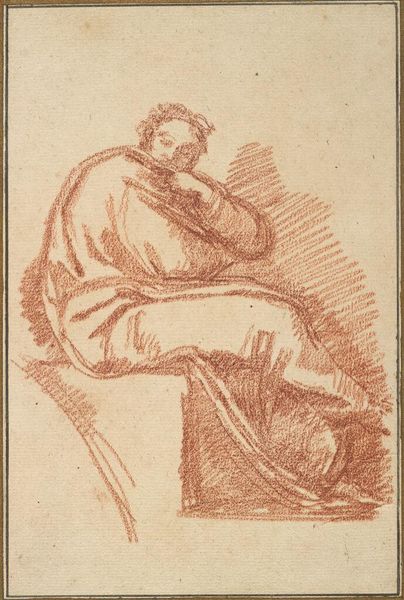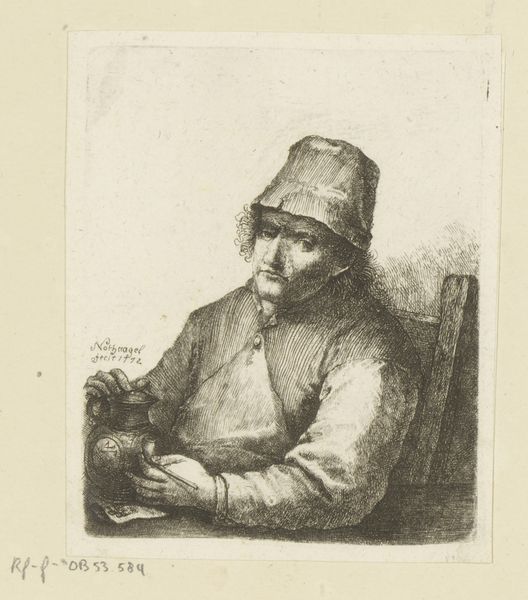
print, etching, engraving
#
portrait
#
baroque
#
dutch-golden-age
# print
#
etching
#
pencil drawing
#
portrait drawing
#
genre-painting
#
engraving
Dimensions: 6.9 x 5.5 cm
Copyright: Public domain
Curator: Adriaen van Ostade's "The Smoker," dating from 1647, is an etching, an engraving in earth tones, and framed in an oval. It’s rather unassuming at first glance. Editor: Intimate is the word that comes to mind. There's a warmth despite the sitter's rather weary appearance, that monochromatic color palette, and the rough, sketch-like quality of the lines contributes to that as well. What details catch your eye? Curator: The sitter’s clothing is a testament to the labor practices and material realities of the time. Notice the layering – the heavy, draped fabric indicative of protection from the elements but also potentially pointing to economic status. We can appreciate the value in functional clothing for a working-class individual, and that the attire holds stories of use, wear, and social experience. Editor: Absolutely. The pipe itself becomes an important symbol here. Tobacco had this fascinating duality back then: on one hand, it’s associated with leisure, perhaps even luxury and on the other, you also have the burgeoning culture surrounding tobacco use, one that cut across social strata. Consider that little table: the communal experience hinted at through tobacco. What do you imagine is in that box sitting beside the man? Curator: Quite possibly more tobacco. Ostade was interested in scenes of everyday life, particularly the lower classes. By creating this artwork via etching and engraving techniques, there is also accessibility to his art because this facilitates broader dissemination. Editor: It also touches on deeper cultural codes. The pipe can also signify contemplation. He's partially obscured, which forces you to look closer to decipher his expression, making you almost a part of his intimate setting. He's enveloped in this meditative practice and you get the feeling you shouldn't interrupt him. Curator: We can appreciate this work through a lens focused on material culture—labor, means of production, trade networks tied to tobacco consumption, and of course class identity are the essence of how the era functioned. Ostade seems aware of the social implications around the sitter here and also brings into focus some of those details about material accessibility. Editor: I see "The Smoker" as a rich tableau of meaning, beyond the everyday portrayal that speaks to this person's history as an everyman: we get a feeling he has known suffering and we are also seeing the beauty of everydayness. Ultimately the viewer gets a strong impression of him and that makes this a wonderful symbolic study about his period.
Comments
No comments
Be the first to comment and join the conversation on the ultimate creative platform.

